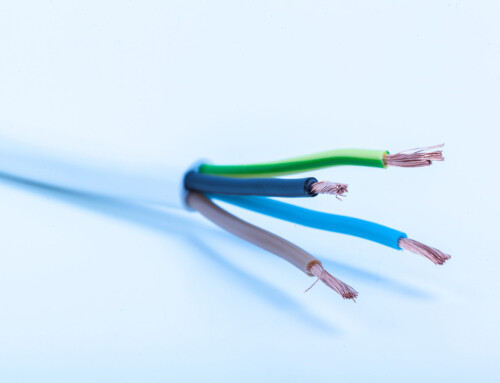Table of Contents
DC motors are electrical devices which draw electricity (direct current) and convert it into mechanical energy. They have many uses in today’s industries, even though alternating current is the preferred choice for mains power supply. They are especially useful for machines that need to be driven at variable speeds.
DC motors are easy to miniaturize, making them ideal for compact devices and particularly useful in low voltage or low power applications. They’re also well suited for high-power applications to the tune of several megawatts, and where speed variation is needed at high performance levels without complicated motor control systems.
Operating Principle
A very basic DC motor is quite simple: An armature carrying a current, connected through brushes and commutator segments to the supply end, placed between two magnets (electro or permanent) so the north and south poles are perpendicular to the armature.
When the current flows through the armature (using a motor starter), this produces rotational movement.
Construction of a DC Motor
Here’s a brief overview of some of the parts used in the construction of DC motors:
- Yoke – This is the outer frame which houses a DC motor. It is typically made of either steel or cast iron. Apart from providing the entire assembly mechanical strength, it also carries the motor’s magnetic flux, which the field winding produces.
- Pole and Pole Shoes – Poles are bolted and welded to the yoke, and they house the field winding. The pole shoes are attached to the pole assembly, to support the field coils and uniformly spread the flux through the air gap.
- Field Winding – These are often made of copper and former wound, connected in series across each pole. The winding is done in a way that they form alternate South and North poles when energized.
- Armature Core – This is the cylindrical rotor of the machine with slots for the armature winding, composed of thin laminated steel discs to reduce eddy currents.
- Armature Winding – Also former wound, the winding is usually made of copper and rests in slots in the armature. The conductors are insulated from the core, and from each other.
- Commutators and Brushes – These physically connect the armature winding. The commutator is an arrangement of copper segments equal in number to the armature coils. These are insulated against each other and provide the current for the armature conductors.
Carbon or graphite brushes rest on the commutator and slide across segments when the motor turns, to supply current and keep physical contact.
Types of DC Motors
Based on the type of winding, DC motors are categorized into 3 types:
- Series Wound Motors – The armature coil and field coils are connected in series, hence the name. The direction in which the motor rotates can be reversed easily, just by reversing the polarities of the field coil or the armature.
- Shunt Wound Motors – The armature, coils and field coils are either supplied with different voltages using 2 sources, or in parallel to match the requirements of the machine.
To reverse the direction, either of the windings is inverted, usually (to save time) by inverting the voltage at the armature. This is the way most bidirectional DC motor speed drives operate. - Compound Wound Motors – This motor type has the qualities of both shunt and series wound motors. Each field coil pole has 2 windings, with one connected to the armature in parallel and the other in series.
If both ampere turns add their effect, it works as an additional flux motor, and if they work against each other, it functions as a negative flux motor. This mounting method is rarely used, since it can be unstable with high loads.
At D&F Liquidators, we offer competitive prices on large inventories of electrical construction materials. We’re your best source for connectors and conduit fittings, PVC products, cables and wiring devices, safety switches, circuit breakers, junction boxes, various types of motor control, and more. Contact us to discuss your requirements today!






